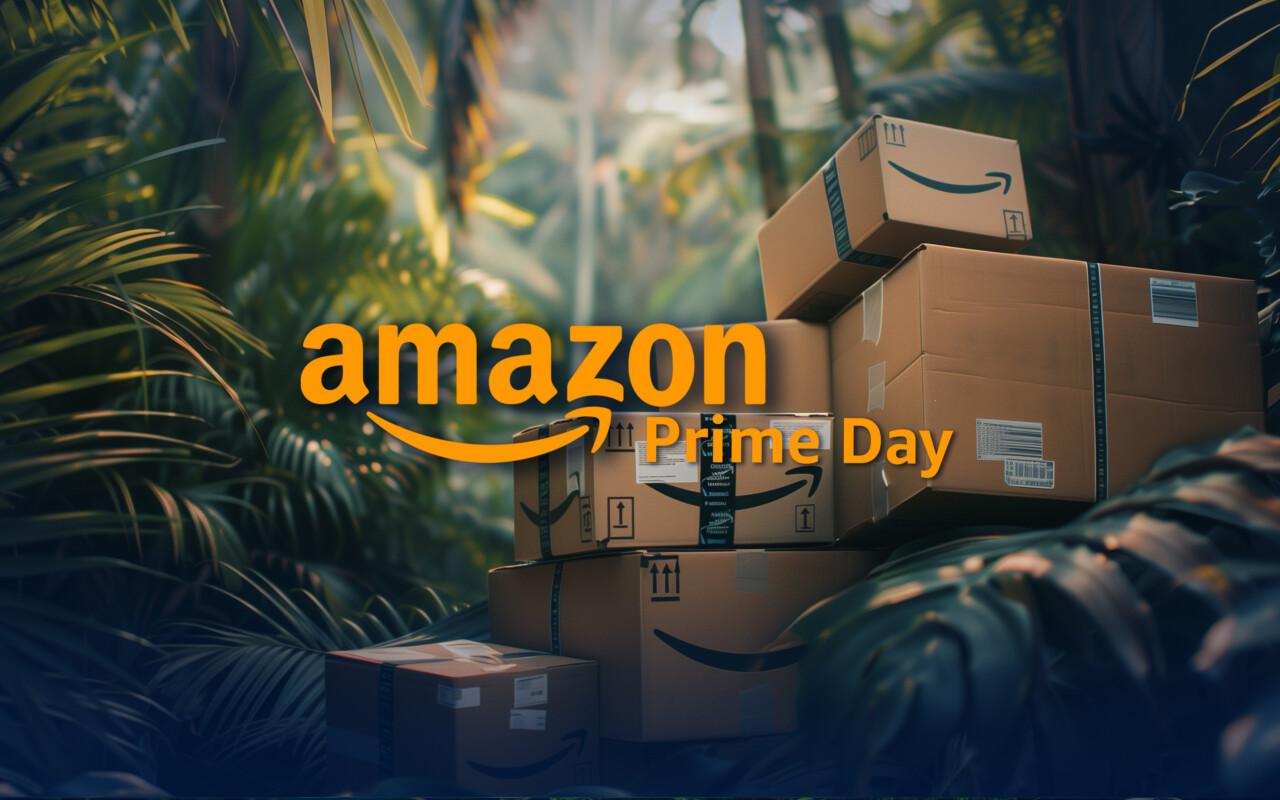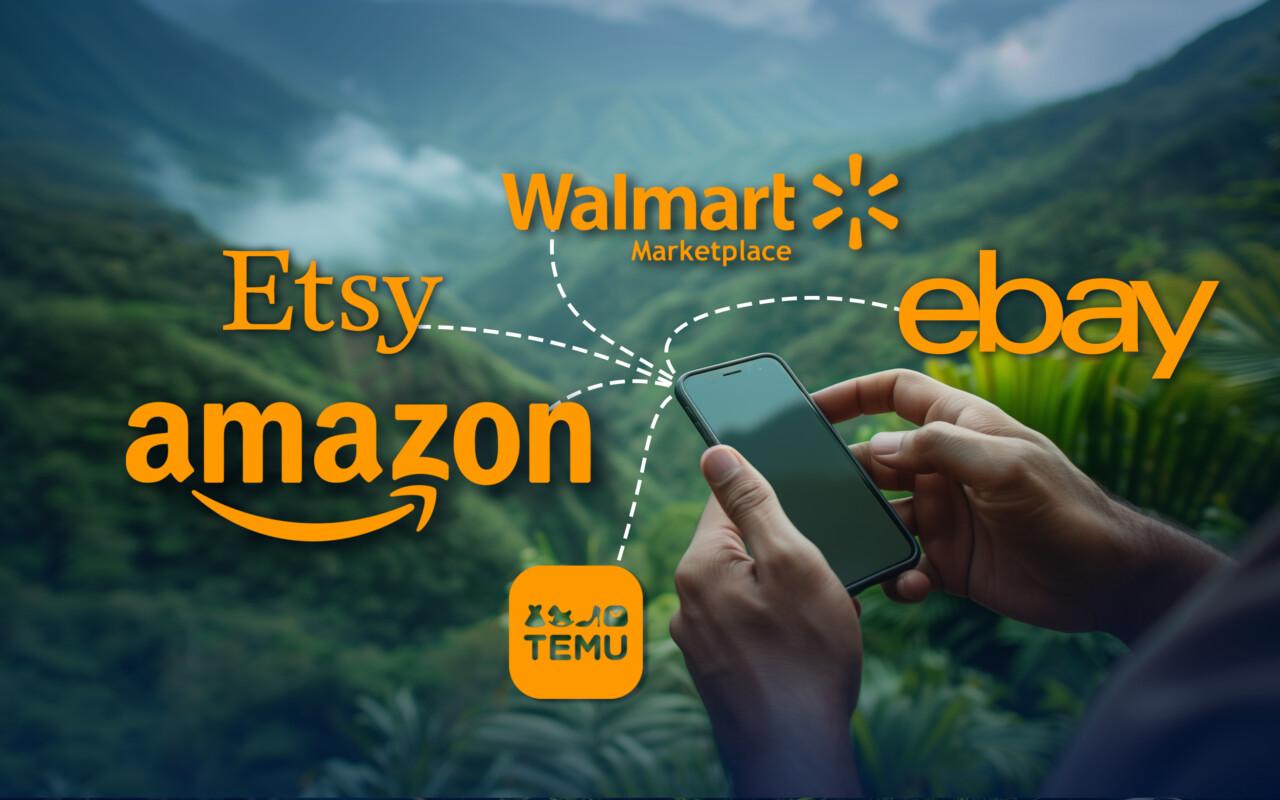Since Amazon does not yet operate in Finland, we can only use the platform’s features outside Finland for the time being. When you want to expand your business into international markets, Amazon is an excellent tool to open up new markets. But why is Amazon such a good option? What is Amazon Global Selling, and what are the opportunities and challenges of selling internationally on Amazon?
In this blog, we will go through these questions and offer concrete tips on how to start selling internationally through Amazon.
Why is Amazon an excellent tool to open new markets abroad?
Amazon is one of the world’s largest e-commerce platforms and its global reach offers significant advantages for cross-border e-commerce. Amazon’s international sales programs and support services enable sellers to sell products across a wide range of markets without having to set up a local operation in each country separately. Through Amazon, we have access to a range of tools and support services that facilitate international sales, including international logistics services, currency conversions, information & educational materials, and customer service in local languages.
Read also: What is Amazon FBA and why we recommend it?
Amazon is also a great way to open up new markets for the first time in areas where we don’t do other business. Through Amazon, by doing the right things, we can quickly generate our first sales in a completely new market. Selling on Amazon in turn serves as an excellent validation of a new market in a competitive environment. This is a hugely important business card and proof of the potential of your product in the target country, often even a prerequisite for starting discussions with local retailers.
Tarja Keen, the founder of pet product manufacturer Finnero, shared her experiences in our webinar:
“Going international has been our goal from the start, and Amazon is a central channel in doing so. Other resellers of Finnero see Amazon as a significant shop window for our products. Especially with bigger chains we have noticed, that it’s pointless to even negotiate about resale unless you can show how they sell on Amazon. Sales on Amazon communicate directly the interest consumers have on the brand and its products”, says Keen.
What is Amazon Global selling?
Amazon Global Selling is Amazon’s own name for a service designed to make it easier to sell products in international markets. Through Amazon, you can sell your products in countries such as the United States, Canada, Mexico, the United Kingdom, Germany, Italy, France, Spain, the Netherlands, Sweden, Poland, Australia, Japan and India. Amazon gives you access to millions of potential customers around the world, and Amazon’s advanced logistics network and marketing tools make selling internationally easy and efficient.
Read also: What is EFN and what are its benefits for selling on Amazon?
Amazon also makes it easier to scale sales to new markets. Once we have successfully developed Amazon sales in Germany, for example, we can very flexibly expand existing sales to the EU, the UK or the US. The table below, based on Semrush estimates, shows the current Amazon market in terms of the estimated number of visitors per month:
| Country | Estimated Monthly Traffic | Website |
|---|---|---|
| United States | 4.2 billion | amazon.com |
| Japan | 900.4 million | amazon.co.jp |
| India | 707.7 million | amazon.in |
| United Kingdom | 526.5 million | amazon.co.uk |
| Germany | 508.7 million | amazon.de |
| Brazil | 294.8 million | amazon.com.br |
| Canada | 273.3 million | amazon.ca |
| Italy | 261.6 million | amazon.it |
| France | 259.7 million | amazon.fr |
| Spain | 243.5 million | amazon.es |
| Mexico | 163.43 million | amazon.com.mx |
| Australia | 71.9 million | amazon.com.au |
| Turkey | 61.6 million | amazon.com.tr |
| Egypt | 54.4 million | amazon.eg |
| United Arab Emirates | 34.1 million | amazon.ae |
| Saudi Arabia | 31.9 million | amazon.sa |
| Netherlands | 28.5 million | amazon.nl |
| Poland | 21.5 million | amazon.pl |
| Singapore | 7.94 million | amazon.sg |
| Sweden | 9.73 million | amazon.se |
What are the opportunities and challenges of selling internationally on Amazon?
Opportunities
- Large customer base: with over 300 million active customer accounts worldwide, Amazon has a huge potential customer base.
- A comprehensive logistical network: Amazon FBA (Fulfillment by Amazon) takes care of the storage, packaging and delivery of products, making it easy to trade internationally.
- Easy payments: a currency conversion tool for Amazon sellers allows them to receive payments in local currency, making payments smooth and secure.
- Marketing opportunities: you can use the same marketing strategies across all markets, which helps you manage campaigns more effectively and expand sales opportunities.
Read also: Why Amazon: The world’s largest e-commerce platform opens opportunities for businesses of all sizes
Challenges
- Local regulations and taxation: each country has its own rules and tax requirements, which can complicate operations. Read also: What a company selling on Amazon.com needs to know about US taxation
- Product restrictions and compliance: some countries have stricter product restrictions, which requires careful preparation and possibly obtaining a local business address.
- Costs and logistics: International trade can be expensive, with a lot of paperwork and other barriers to doing business.
Read also: Common mistakes with Amazon and how to avoid them
How to start selling on Amazon? What documents do I need?
1. Choose the market
Decide which countries you want to sell your products in. Find out about taxation, regulations and other sales requirements in those countries. When choosing a market, it is also worth considering factors that affect sales in that particular Amazon market, such as the demand and competition for the product category. Read also: A successful Amazon strategy is based on the correct information
2. Register and list your products
Register as a seller in the markets you selected and list your products. Set your prices and choose your payment method. Amazon provides tools to help you manage your seller account and your products across markets.
3. Plan the fulfillment method
Determine how you will deliver your product and the costs, times and requirements involved. You can use Amazon FBA, handle the delivery yourself, or work with a third-party logistics partner.
4. Documents and other requirements
For international sales on Amazon, you will usually need the following documents:
- Business information: company name, address, and contact details.
- Tax information: tax identification numbers and any VAT registrations.
- Bank details: local bank account to receive payments.
- Product documentation: product descriptions, prices, and stock information.
- Product codes: EAN, UPC, or GS1 codes for your products, along with their relevant certificates. Read also: product codes on Amazon – what, why and when?
Getting started on Amazon is quick and relatively inexpensive, but success requires an understanding of the e-commerce giant’s business logic. Getting to the top of Amazon’s search results requires a careful strategy and continuous optimisation. Our knowledgeable journey leaders will be happy to discuss your business’s potential in the ecommerce jungle with you – feel free to contact us!


